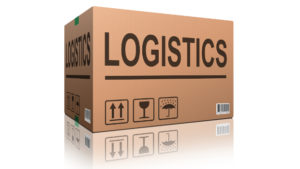It has finally escaped the shadow of Bitcoin, but while blockchain, the distributed ledger technology that underpins cryptocurrencies has been hailed as the technology of the future, questions linger: is this the next ubiquitous trend in computing, following virtualisation and the cloud, or is it, as critics, suggest, a solution in search of a problem?
Trevor Clohessy, says that a part of the problem is that while blockchain’s potential is understood, there remains a lack of real world examples.
“Real estate, the public sector, no matter what industry you look at, there’s no prototype out there to point to,” he said.
Clustered adoption
Clohessy, a lecturer in digital transformation at NUI Galway’s JE Cairnes School of Business and Economics, recently published research saying that there was a 40% blockchain adoption rate among Irish enterprises to date, but that it was clustered in the fintech and information technology sectors.

“There’s a lot of stuff going on behind Hardrian’s wall with large companies. All those large companies are going private with blockchain, just as they did with cloud: one bank in the UK has put the financial regulator on their blockchain; Eurostar is putting identities on the blockchain. Blockchain is the next instance of decentralisation and I think it’s really going to evolve over the next few years,” Trevor Clohessy, NUIG
There is the potential for so much more, though, said Clohessy.
“There’s a lot of stuff going on behind Hardrian’s wall with large companies. All those large companies are going private with blockchain, just as they did with cloud: one bank in the UK has put the financial regulator on their blockchain; Eurostar is putting identities on the blockchain. Blockchain is the next instance of decentralisation [and] I think it’s really going to evolve over the next few years.”
Naturally, cryptocurrencies, particularly shady ‘ICOs’, have muddied the waters somewhat, but Clohessy says cooler heads will eventually prevail
“You hear people saying ‘it’s a scam!’, ‘it’s an ICO’, ‘it’s the Russians; the Russians are coming!’ I did my PhD research into cloud computing in 2010 [and] I’m seeing a similar trend. The main stumbling block is a lack of business use cases to show to people. they want to see an example of it in use.”
Fisheries board
One example that may become available is Bord Iascaigh Mhara, the Irish fisheries board, which is looking at blockchain as a technology that could smooth commerce.
“Bord Iascaigh Mhara is bogged down with documentation. The markets are now open into China and, rather than be held up with more paperwork, they want to use blockchain. This is the kind of roadmap we need,” he said.
And there you have it: not an initial coin offering and certainly no get rich quick scheme, blockchain is being suggested as a means of easing business processes through technology.
For all of its potential, the technology has its critics, nonetheless. David Furlonger, analyst at Gartner, says that while blockchain is interesting, it has a way to go before it will see mainstream adoption.
“I think, looking at the moment, a lot of that were seeing is a solution looking for a problem,” he said.
“It’s a hype cycle, and we still have to go through a proper disillusionment; maybe by 2020 and then we’ll see.”
Furlonger is not saying the concept is without use; just that important details have yet to be worked out.
“There is a long term move toward decentralisation and encryption, but for now it seems to me that the enterprise or private permission environments can be achieved with existing technology,” he said.

“Every customer I speak to has issues: ‘How do you get agreement? How do you manage synchronisation? Who’s paying for this? How do you manage legal compliance issues across jurisdictions?'” David Furlonger, Gartner
“Every customer I speak to, and I’ve spoken to two just recently, one in retail and one in chemical, and they have issues: ‘How do you get agreement? How do you manage synchronisation? Who’s paying for this? How do you manage legal [compliance issues] across jurisdictions?'”
Furlonger also cautions that practical problems need to be worked out, not least demands on IT staff and budgets.
“TCO is greater. You’re bringing in technology that requires a different level of governance and security but you’re not turning off your existing systems.”
Blockchain in lab and field
All of which is not to say that blockchain is a phantom.
Marko Javornik, vice president and general manager of mobility and travel at Comtrade Digital Services, says that he is looking at the technology very closely.
“We have a lab that looks at all interesting emerging technologies, and blockchain is obviously one of those. It has the possibility to entirely disrupt the digital economy worldwide,” he said.
Javornik says that such a statement can be justified by seeing blockchain at work.
“Distributed ledger technology, which is what blockchain allows, is ideal for [things like] maintenance audit trails, loyalty systems, peer to peer ticket exchange. These were all winners at our [lab’s] hackathon, with maintenance audit chain as the main winner.”
For Javornik these kinds of applications, important but quotidian, are really opening the door for a technology that will radically change commerce. Just not tomorrow.
“What is maybe more exciting, a bit more long term, is the ability of blockchain to decentralise the economy,” he said. “This is more than just creating audit trails. but it will take a longer time, maybe the next generation.”
He also notes the beginnings of what Furlonger called the normal working out of the hype cycle:
“It’s an inspirational technology trend. There is a little bit of disillusionment, because while people can envision new things, the reality is it won’t be next year. There are issues of latency and performance, issues of energy use and so on. These are fundamental issues that mean this technology won’t quite go mainstream just yet,” he said.
There is another barrier to rapid and widespread adoption of blockchain, though: culture.

It’s an inspirational technology trend. There is a little bit of disillusionment, because while people can envision new things, the reality is it won’t be next year. There are issues of latency and performance, issues of energy use and so on. These are fundamental issues that mean this technology won’t quite go mainstream just yet,” Marko Javornik, Comtrade
Culture block
Hugo McCafferty, communications manager of the Blockchain Association of Ireland, says that in the domestic economy at least, uptake is being held back.
“There’s an inherent conservatism in Irish businesses, particularly the long established businesses,” he said.
McCafferty praises the Irish government for publishing a discussion paper on blockchain, but he wants to see more, arguing that Ireland is in an ideal position to exploit global interest in the technology. In order to do this, the ‘Wild West’ image associated with blockchain must be tamed.
“We have an opportunity as a small country, a small economy but an outward looking one, to become a blockchain leader. Until now it has all been enthusiasts, but it’s time now for regulation,” he said.
“There’s also a skills gap: there are 14 jobs on offer for every one blockchain developer,” he said.
McCafferty says that if Ireland does not do it, someone will.
“The whole thing about blockchain is that there has to be openness and transparency. As soon as governments in Europe – and I can see the likes of Switzerland, Luxembourg and Liechtenstein making the first tentative steps – act then people will begin to jump on board.”
Project success
Nothing will do more to wipe away any lingering fears about blockchain being too closely linked to Bitcoin than successful projects – and some of them are in surprising areas. Mark McCarville, managing director at technology and business development consultants Mindseed, has been working with Ireland’s space sector, and he says that blockchain has the potential to see the industry grow.
“We have been looking at how emerging technologies can be prototyped very rapidly; asking how does an emerging technology impact on satellite, for example,’ he said.
“The underlying technology of blockchain is beginning to permeate, particularly in logistics where there is a huge amount of paperwork involved, so how is it that you are going to validate and reconcile satellite with blockchain? And what additional features can blockchain bring to it?”

“The underlying technology of blockchain is beginning to permeate, particularly in logistics where there is a huge amount of paperwork involved, so how is it that you are going to validate and reconcile satellite with blockchain? And what additional features can blockchain bring to it?” Mark McCarville, Minseed
The fact that Ireland has a space sector may come as a surprise to some, much to McCarville’s chagrin, as he says it is a valuable and growing area that does not get enough attention. For almost a decade, Mindseed has helped companies develop projects through the European Space Agency (ESA).
“Space is typically split into three areas: ground segment, midstream and upstream. There are huge opportunities to develop space assets. Investment in space in Ireland has a return on investment of between four to seven times. We’re only really scratching the surface.
“They [the ESA] have a Future Technology Group (FTG). They decided to run a pilot programme and put out a call where they provided funding for groups to put their own calls, working within the FTG within ESA.”
McCarville says that, exotic as space may sound, the technology is very much grounded in areas we already understand, notably logistics. Indeed, Mindseed is working with another Irish company in logistics.
“Road transport, rail transport and air transport and it’s directly using blockchain,” he said.
Logistics derived
In terms of space, the first applications are very much derived from the logistics industry.

“We have an opportunity as a small country, a small economy but an outward looking one, to become a blockchain leader. Until now it has all been enthusiasts, but it’s time now for regulation. There’s also a skills gap: there are 14 jobs on offer for every one blockchain developer,” Hugo McCafferty, Blockchain Association of Ireland
“Every vessel [at sea] over seventeen meters has a thing called AIS [automatic identification system], it’s very much like the transponder on an aircraft, and it identifies the vessel. One of the things it is used for is regulatory compliance. Think about fishing, for example, each vessel has an allowance for a certain weight or it’s allowed to be in a certain place,” he said.
By using blockchain technology in conjunction with satellite imaging any required proofs can be provided.
If anything sounds like the future of a technology, it is just that: not the glow of the rockets or science fiction dreams of space flight, but its implementation in a real world scenario to address a very real need.
“We’ll have a working demonstration in two to three weeks,” said McCarville.







Subscribers 0
Fans 0
Followers 0
Followers